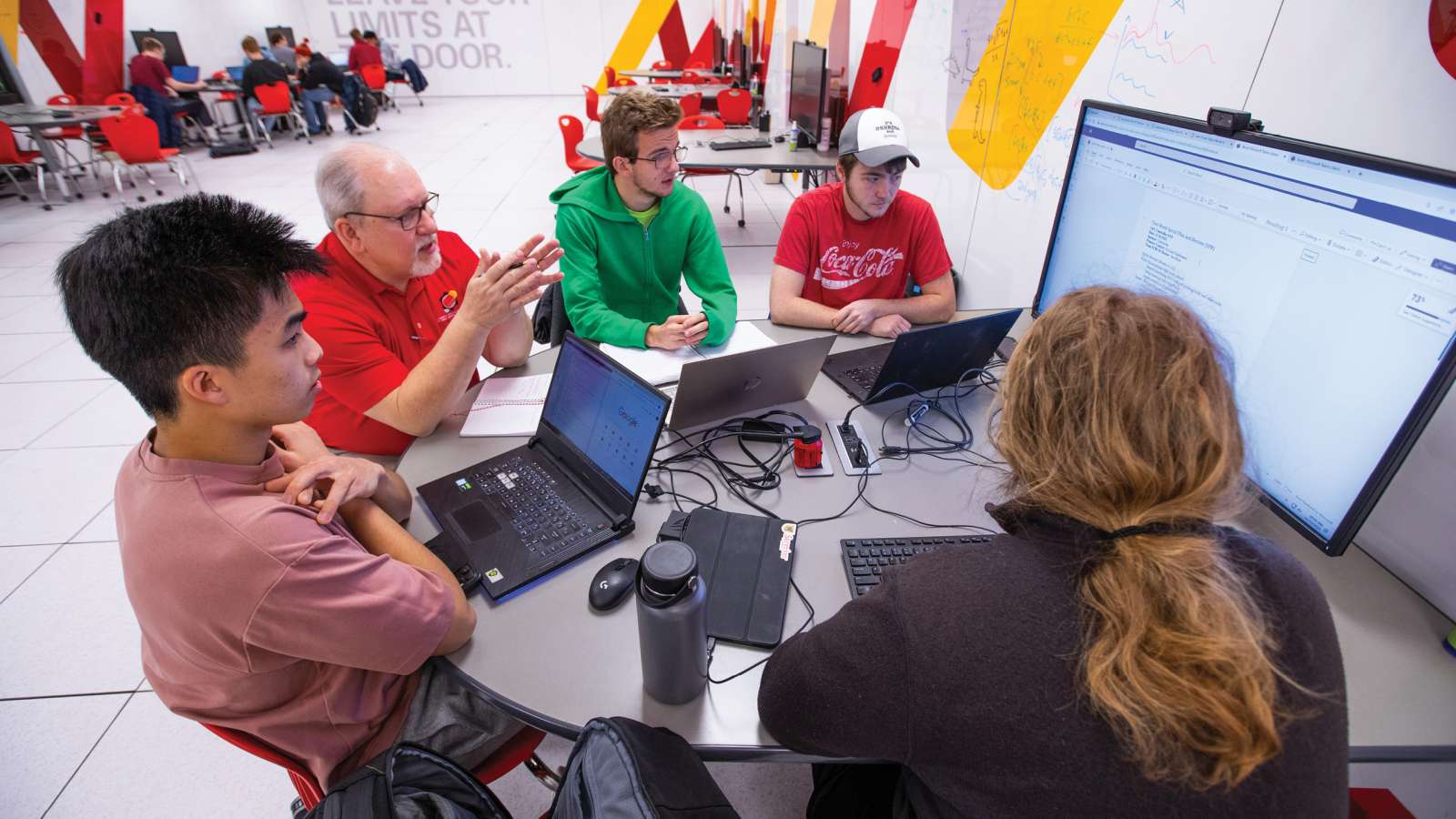Down in the basement of the Black Engineering Building late last fall, students of mechanical engineering’s senior capstone course gathered in their working groups.
There were four or five to a table, open laptops before each student engineer. The semester’s 23 teams were all working to design solutions to real problems at companies big and small, most with Iowa operations.
This particular class session was a sprint, plan, and review day. Jim Heise, professor of practice in mechanical engineering and the instructor who started the course in 2008, visited with each team to ask about progress and problems.
“We’re keeping teams accountable every two weeks,” Heise says.
The participating companies are not only bringing their problems to the course, they’re financial sponsors, too. Their thousands of dollars support the students’ project expenses, the hiring of student technicians in a fabrication lab, and course administrative costs.
So Heise has this message for students: “These companies are paying customers. You’re not just here for a grade. You’re here for a successful business venture.”
This course has been a successful venture. Between its founding and fall 2021, student teams helped 135 Iowa companies, produced an economic impact of $87.4 million, and created 209 jobs, according to Iowa State’s Center for Industrial Research and Service.
One of the current student teams reported to Heise about its work to help CURRIES, a Mason City manufacturer of steel doors for commercial and industrial use. The company wanted a better way to cut and weld metal parts for the window frames embedded in some of its doors.
Chris Clark, a senior from Hampton, Illinois, thinks the search for solutions will help him and his capstone classmates prepare for work as engineers.
“We’re learning to see where there are issues,” he says. “Then we can assess, understand what’s happening, make improvements, and go to the factory floor.”
As Heise says of the course and the students’ work, “Everything in here is about real issues and real challenges in engineering.”
Read more about Iowa State’s workforce and economic development efforts in the third installment of News Service’s “Innovation at Work” series this March and April: src.iastate.edu/innovation-work
